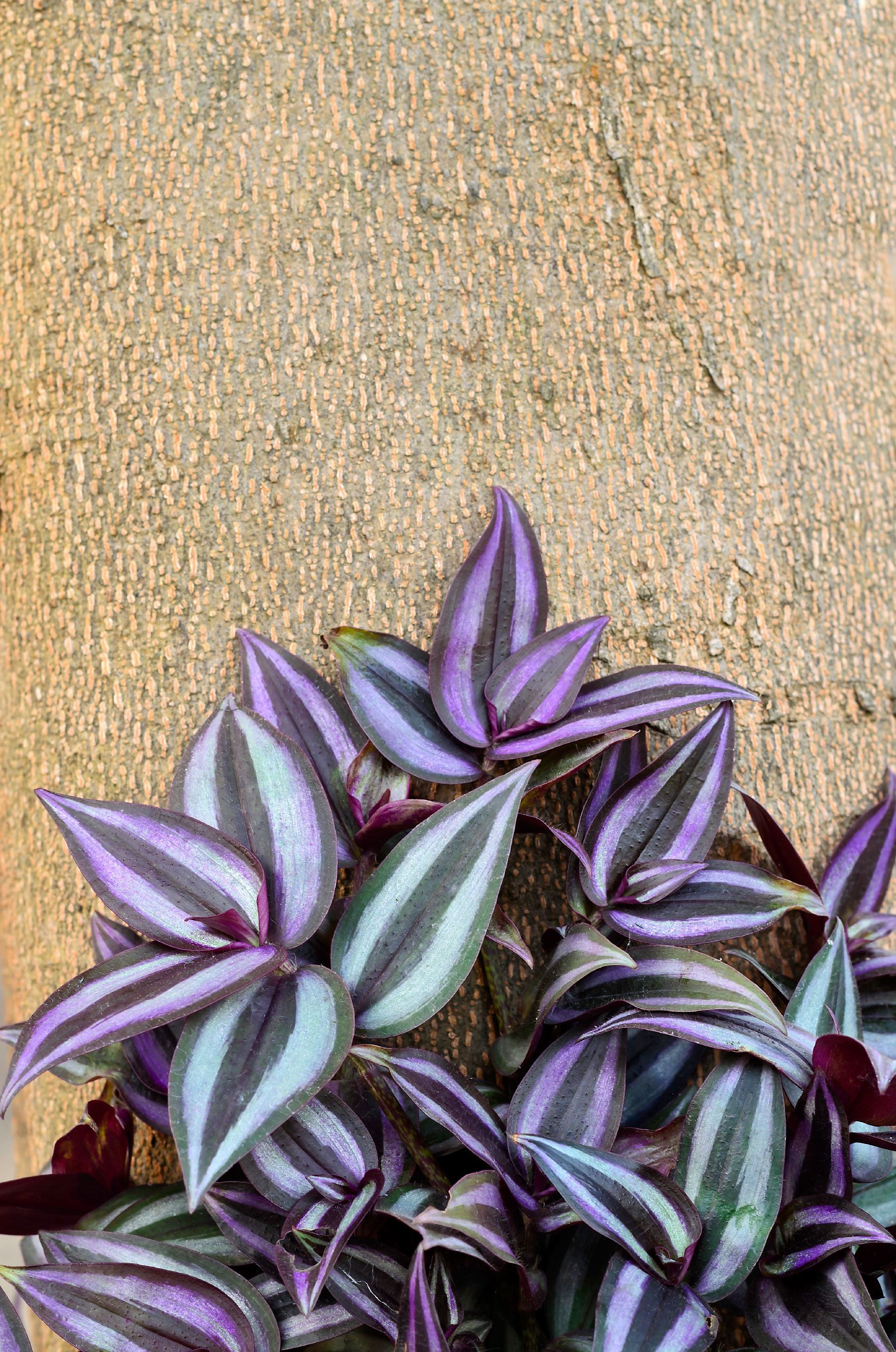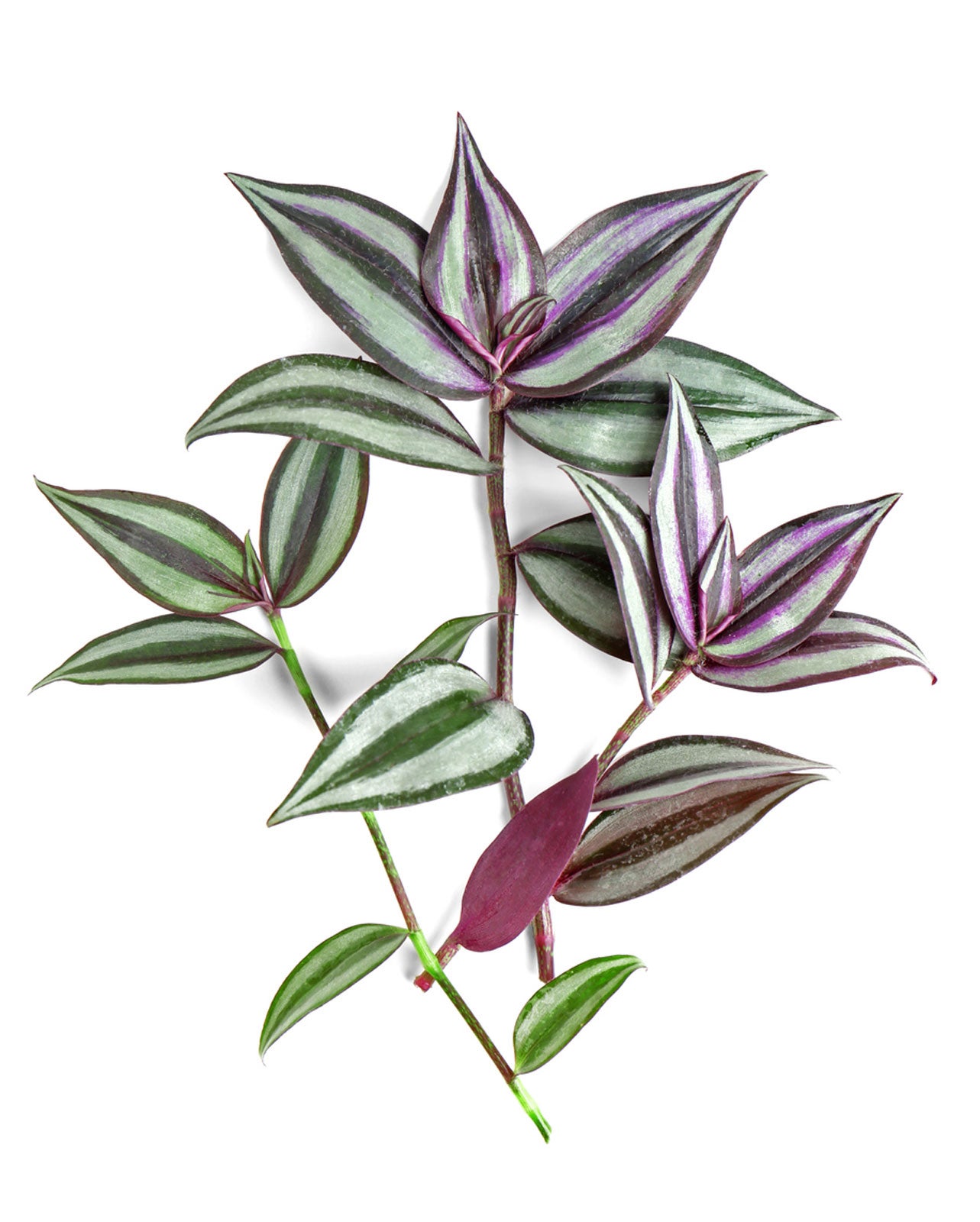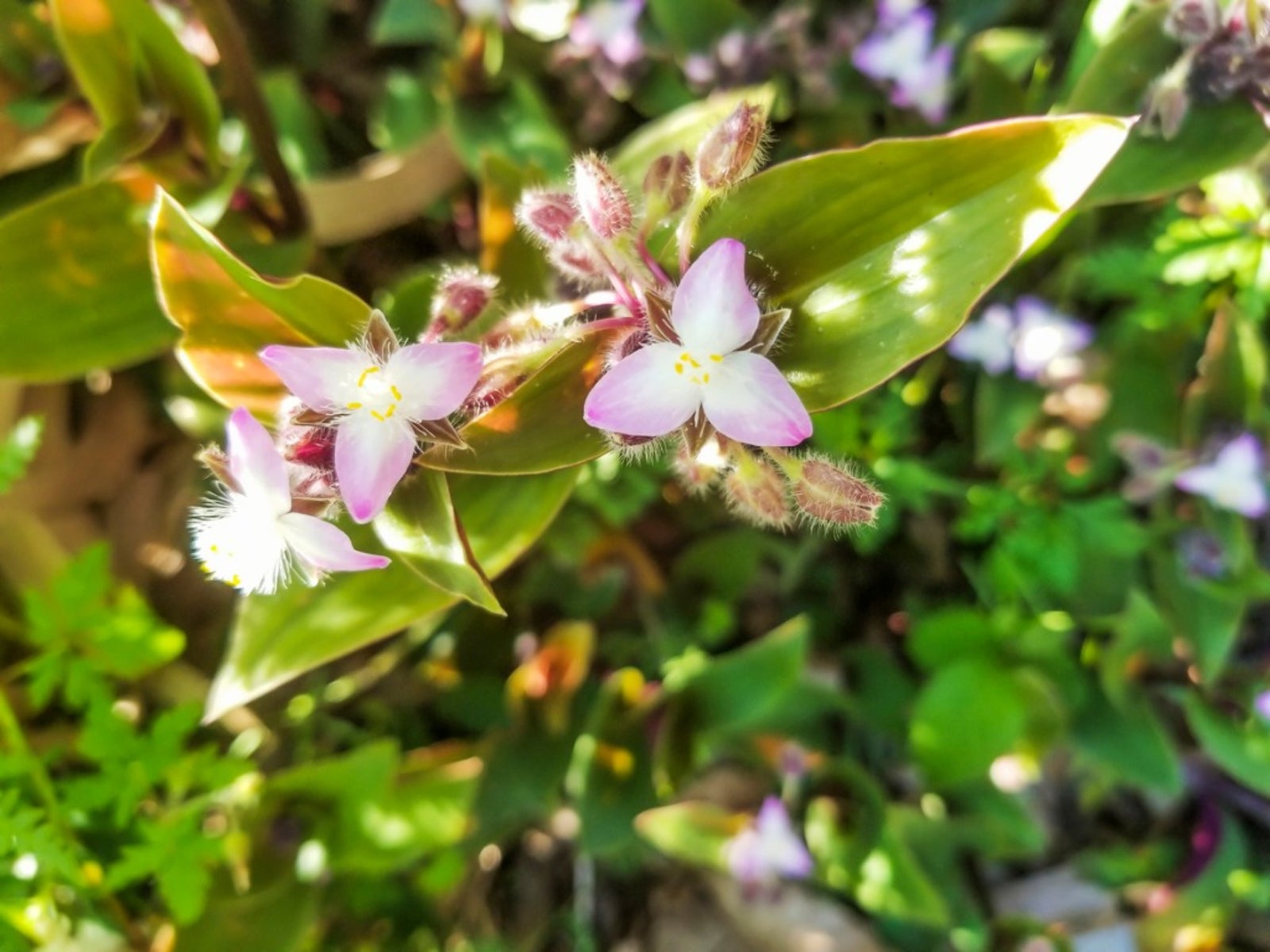Growing Inch Plant Outside: How To Plant Inch Plant Outdoors

The inch plant (Tradescantia zebrina) is truly one of the easiest plants to grow and is often sold throughout North America as a houseplant due to its adaptability. The inch plant has small purple flowers that flower sporadically through the year and contrast nicely against its variegated purple and green foliage, making it a lovely container specimen either indoors or out. So can inch plant survive outdoors? Yes indeed, provided you live in USDA zone 9 or higher. Inch plants like warm temperatures and fairly high humidity. The plant has a wandering or trailing habit, and in USDA zone 9 and above, it makes an excellent groundcover, especially under taller specimen plants or around the base of trees.
How to Grow an Inch Plant Outdoors
Now that we have ascertained that inch plant is not just a pretty houseplant, the question remains, “How to grow an inch plant outdoors?” Just as inch plants grows quickly and easily as a hanging houseplant, it will soon cover a large area of outdoor landscape as well. Inch plant should be planted in shade to partial sun (indirect sunlight) either in hanging baskets or in the ground in the spring. You may either use a start from the local nursery or a cutting from an existing inch plant. Inch plants will do best in rich soil with good drainage. Cover the roots of the start or cutting and the bottom 3 to 5 inches (8-13 cm.) of stem with soil, taking care as the plant breaks very easily. You may need to remove some of the leaves to get a good few inches (8 cm.) of stem to plant.
Caring for Tradescantia Inch Plant
Keep inch plants moist but not wet; it's better to underwater than overwater. Don't worry, inch plants can survive very dry conditions. Don't forget it all together though! Liquid fertilizer should be applied weekly to foster a good rooting system. You may pinch the stems to encourage bushier (and healthier) growth and then use the cuttings to create new plants, or “fluff up” a spindly hanging plant. Either put the cuttings in the soil with the parent plant to root, or place them in water to allow roots to develop. When inch plant is planted outdoors, it will die back if frost or freezing temperatures arise. However, it will be sure to return in the spring provided the freeze was of short duration and temperatures warm quickly again. Provided you live in an area of sufficient humidity and heat, there is no doubt that you will be enjoying the fast and easy growing inch plant for years to come.
Gardening tips, videos, info and more delivered right to your inbox!
Sign up for the Gardening Know How newsletter today and receive a free copy of our e-book "How to Grow Delicious Tomatoes".

Amy Grant has been gardening for 30 years and writing for 15. A professional chef and caterer, Amy's area of expertise is culinary gardening.
-
 Looking For Plants To Give You The Soft And Fuzzies? Try These 5 Fuzzy Leaf Plant Options
Looking For Plants To Give You The Soft And Fuzzies? Try These 5 Fuzzy Leaf Plant OptionsLovers of texture, drama, silver foliage and tactile plants will adore these special sensory garden additions. These fuzzy leaf plant options will leave you all aglow
By Susan Albert
-
 Get Ready For A Summer Of Hummers! Grow These Full Sun Hummingbird Plants and Flowers
Get Ready For A Summer Of Hummers! Grow These Full Sun Hummingbird Plants and FlowersIf you’re lucky enough to enjoy a sunny backyard, make sure you are maxing out on your pollinator opportunities and grow these full sun hummingbird plants and flowers
By Tonya Barnett
-
 Rooting Inch Plants: How To Propagate Tradescantia Inch Plants
Rooting Inch Plants: How To Propagate Tradescantia Inch PlantsInch plant is a pretty houseplant that creeps over the edge of containers. Read on to learn how propagate inch plant cuttings.
By Mary Ellen Ellis
-
 Killing Inch Plants: How To Get Rid Of Inch Plant Weeds In The Garden
Killing Inch Plants: How To Get Rid Of Inch Plant Weeds In The GardenInch plant (Tradescantia fluminensis) is very invasive and should be treated with caution. Click here to learn about inch plant weed control.
By Liz Baessler
-
 Inch Plant Care Guide: How To Grow Tradescantia Zebrina
Inch Plant Care Guide: How To Grow Tradescantia ZebrinaInch plants are beloved houseplants known for their fast growth and easy propagation. Read on to learn more about inch plant care.
By Mary Ellen Ellis